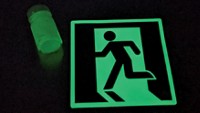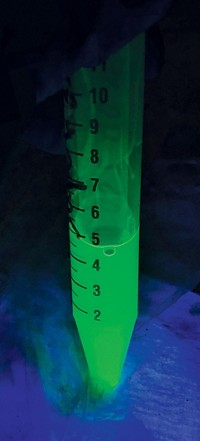Advertisement
Grab your lab coat. Let's get started
Welcome!
Welcome!
Create an account below to get 6 C&EN articles per month, receive newsletters and more - all free.
It seems this is your first time logging in online. Please enter the following information to continue.
As an ACS member you automatically get access to this site. All we need is few more details to create your reading experience.
Not you? Sign in with a different account.
Not you? Sign in with a different account.
ERROR 1
ERROR 1
ERROR 2
ERROR 2
ERROR 2
ERROR 2
ERROR 2
Password and Confirm password must match.
If you have an ACS member number, please enter it here so we can link this account to your membership. (optional)
ERROR 2
ACS values your privacy. By submitting your information, you are gaining access to C&EN and subscribing to our weekly newsletter. We use the information you provide to make your reading experience better, and we will never sell your data to third party members.
Environment
Quantum Dot Behavior In The Environment
Non-water-soluble nanoparticles can transfer from an organic phase to an aqueous phase under the right conditions
by Rachel Petkewich
January 19, 2009
| A version of this story appeared in
Volume 87, Issue 3

Non-water-soluble quantum dots (QDs) migrate from an organic phase to an aqueous phase containing natural organic matter, a new study shows (Environ. Sci. Technol., DOI: 10.1021/es8017623). The finding could help researchers better understand how the semiconducting nanoparticles might behave in the environment. QDs feature metal-based semiconductor cores coated with organic ligands and are used in electronics and as imaging agents. But little is understood about the mobility of QDs in waterways. The concern, according to the study’s authors, is that the coatings on the QDs may degrade in water and expose the cores, which are known to harm aquatic organisms at relatively low levels. Diana S. Aga, Sarbajit Banerjee, and colleagues of the State University of New York, Buffalo, dissolved QDs made up of CdSe cores and trioctylphosphine oxide coatings in hexane. They then mixed the solution with creek water or deionized water spiked with humic acid or fulvic acid, which are organic components of soils. Spectroscopy and microscopy results demonstrated that QD migration into water occurred in less than 24 hours—despite the QDs’ hydrophobic coating—and that some metal-ion leaching occurred. Aga says the results indicate a need for more robust QD coatings, which may help to maintain the particles’ structural integrity.





Join the conversation
Contact the reporter
Submit a Letter to the Editor for publication
Engage with us on Twitter